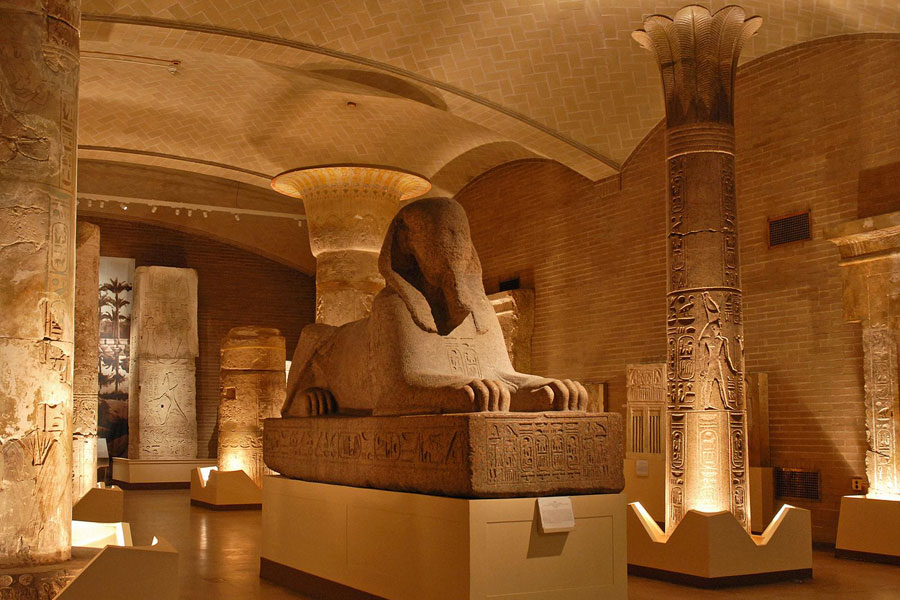
Museum Object Number: E12326
Excavated by W. M. Flinders Petrie in 1913 near the Ptah Temple at Memphis, the Penn Museum’s twelve-ton sphinx is the largest sphinx in the Western Hemisphere. The sphinx, a lion with a human head, represents the power of the Egyptian king. Carved of a single block of red granite, quarried at Aswan, the five-fold titulary of Ramesses II appears along the base of this sphinx. Ramesses II’s son and successor, Merenptah, added his own cartouches on the shoulders after his father’s death. For several years after its arrival in Philadelphia, the sphinx sat in the garden in front of the Museum. The sphinx was moved inside the building in 1916. When the Coxe Wing was nearing completion in 1926, the sphinx was moved to its current location in the Lower Egypt gallery.
